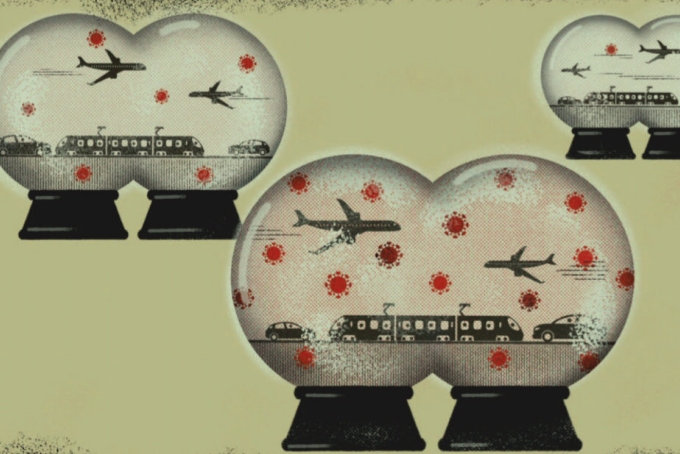Finance & economics
财经
The global economy
全球经济
A good kind of bubble
良好的圈
As some countries contain the virus more successfully than others, could travel zones offer a route to economic recovery?
一些国家比其他国家更成功地遏制了病毒,这能否让旅游业为经济复苏开辟一条道路?
It may be a painful fact to contemplate during these locked-down days, but last year the world was more mobile than ever, with people taking 4.6bn flights.
在封锁期间,这个事实可能会让人感到痛苦,但去年,全世界的流动人口比任何时候都多,人们乘坐了46亿次航班。
In April this year, though, planes carried just 47m passengers; that level of mobility, annualised, would set the clocks back to 1978.
然而,今年4月,飞机载客量只有4700万人次;按年度计算,这样的流动性水平会让时光退回1978年。
The virtual halt to travel has exacerbated the global economy’s woes, complicating trade ties, upending business and devastating the tourism industry.
实际上停摆的旅游业加剧了全球经济的困境,也让贸易关系更加复杂,它颠覆了商业,摧毁了旅游业。

Little wonder that governments want to restore links.
难怪各国政府想要恢复联系。
An idea gaining favour is the creation of travel “bubbles”, binding together countries that have fared well against the coronavirus.
一个越来越受欢迎的想法是创造旅游“圈”,将在对抗新冠病毒方面表现良好的国家联结在一起。
A closer look yields some grounds for optimism.
仔细思考一下,我们是有理由感到乐观的。
The Economist has identified potential bubbles that account for around 35% of global GDP, 39% of all trade in goods and services and 42% of the world’s spending on tourism.
《经济学人》指出,潜在的旅游圈占全球GDP的35%,占商品和服务贸易的39%,以及世界旅游消费的42%。
But the challenge of connecting them also underscores how hard restarting the global economy will be.
但将它们联系起来是一项挑战,这突显了重启全球经济的难度。
Simply returning borders to pre-virus days is, for now, inconceivable.
就目前而言,连让边境恢复为病毒爆发前的样子都难以实现。
Many health experts, first critical of travel restrictions, have come to view strict controls as useful, especially for places that have contained local infections.
许多起初对旅行限制持批评态度的卫生专家开始认为,严格的控制措施是有用的,尤其是在那些控制了本地疫情的地方。
“Every inbound case is a potential seed that can grow into an outbreak,” says Ben Cowling, an epidemiologist at Hong Kong University.
香港大学流行病学家本·考林表示:“每一个传入的病例都是一粒可能导致疫情爆发的潜在种子。”
译文由可可原创,仅供学习交流使用,未经许可请勿转载。












